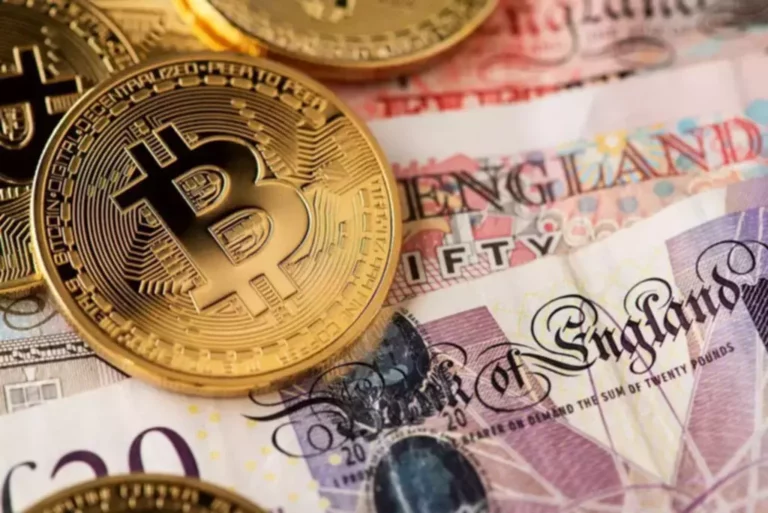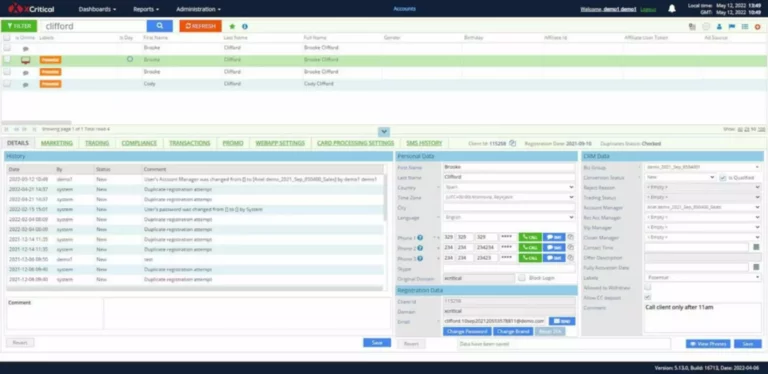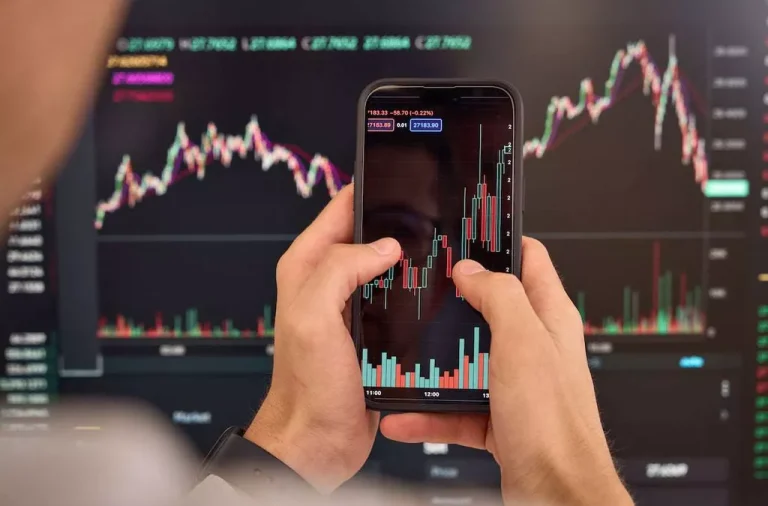Content
In decentralized finance (DeFi), liquidity pools are fundamental in ensuring consistent liquidity flow in DEXs. They motivate users to deposit crypto assets by offering a portion of transaction fees as rewards, often in the form of Annual Percentage Yield (APY). This incentivization scheme attracts investors to bolster the liquidity pools, which in turn increases their ability List of cryptocurrencies to facilitate trading activities. This enhanced capacity helps in minimizing slippage risks and contributes to the overall functionality and robustness of the decentralized exchange environment.
Evaluating Liquidity in Bitcoin and Cryptocurrencies

Exchanges for cryptocurrencies can use a variety of strategies to increase liquidity. Market-making programs https://www.xcritical.com/ reduce spreads and increase liquidity by encouraging participants to constantly quote buy and sell prices. These initiatives provide incentives for supplying liquidity, drawing in traders and maintaining market stability.
What is a crypto liquidity crunch?
Hyperliquid’s airdrop distributed 31% of the total HYPE supply to early supporters and active What is Crypto Liquidity users. This amounted to 310 million HYPE tokens, worth nearly $1 billion based on a projected valuation of $3 billion. Hyperliquid’s tokenomics emphasize community-driven growth, avoiding allocations to venture capitalists or centralized exchanges. Hyperliquid offers up to 50x leverage on perpetual contracts, allowing you to amplify your exposure.
- The person may be forced to sell the painting at a discount to obtain the cash needed.
- He is dedicated to building high performance teams and enjoys being actively involved in problem solving for business growth.
- Market depth, the number of orders at various price points, also influences liquidity.
- For assets traded across multiple platforms, their overall liquidity is the sum total of liquidity in each of these markets.
- In contrast, low market liquidity means that it can be difficult to convert between assets and cash, making it more difficult to close a transaction.
- Something that takes a long time and can’t easily be sold or exchanged without a substantial loss in price has “low liquidity”.
Factors Influencing Liquidity in Crypto Markets
Regular and active trading helps maintain liquidity, even in volatile market conditions. Liquidity providers are crypto exchange users who use their tokens to provide liquidity for the pool. In return, the exchange provides them with tokens representing a portion of the pool.
Mechanisms Contributing to Crypto Liquidity
When liquidity is high, traders can execute orders at more favorable prices with less slippage. Market liquidity describes how easily a cryptocurrency can be bought or sold in the market without causing drastic price changes. High market liquidity means a large number of buyers and sellers, which translates into smoother trading and more stable prices. Liquidity in cryptocurrency refers to how quickly and easily an asset can be bought or sold without causing a significant change in its price. High liquidity means there are enough buyers and sellers in the market and trades can be executed smoothly at stable prices. Low liquidity, on the other hand, can lead to larger price swings when trades occur.
In traditional markets, investors typically place trades via a broker (like Charles Schwab or TD Ameritrade) which routes orders to the particular venue related to the best available price. Typically, exchanges provide a centralized pool of liquidity, particularly for large market cap stocks, and some countries enforce rules to promote a unified, cohesive market. For example, in the United States, brokers are required to fill customer orders at a price equal to or better than the best available price among various trading venues.
The more widely crypto is accepted as a payment method and the more people are aware of it, the more liquidity is likely to improve. However, negative perceptions and regulatory uncertainties can have a detrimental impact. He assumes the role of CEO and his job is to help the team get their job done. Vineet drives the growth strategy and its execution through product innovation, product marketing and brand building.

It marked a major milestone for the platform, unlocking core functionality and introducing the HYPE token to the market. Before accessing the Crypto.com Exchange, please ensure that you are not in any geo-restricted jurisdictions. Limit orders, on the other hand, allow traders to specify a price at which to transact and do not execute until matching with another order. The ratios will tell a company whether it is the right time to invest in various assets or not. The higher the ratio, the more liquid a company is, and the lower the ratio, the less liquid that company is. Financial analysts use various methods to measure assets against liabilities in order to reach an assessment of a firm’s liquidity.
Liquidity pools are essential elements in the mechanics of Automated Market Makers (AMMs), especially within decentralized exchanges (DEXs). These pools, set up as smart contracts, hold pairs of assets and empower AMMs to process trade orders. Acting as a storage for crypto assets on a DEX, they allow for the exchange of one asset for another, with the AMM adjusting the values based on supply and demand. Many decentralized crypto exchanges use automated market makers to manage liquidity.
He is dedicated to building high performance teams and enjoys being actively involved in problem solving for business growth. Vineet, an IIM Indore Alumnus is also a Chartered Accountant and his interests include digital marketing, blogging on recreational mathematics, travelling and has a passion for teaching. When not at work, he loves spending time with his two lovely sons Arham & Vihaan and his wife Preeti.
You can think of it as a reservoir of funds that allows for decentralized, peer-to-peer trading without the need for a centralized intermediary. Exchange liquidity applies to the availability of liquid markets on a specific exchange. An exchange with high liquidity will have tight spreads between buy and sell prices, more frequent trading, and a large number of participants. In contrast, an exchange with low liquidity may have large price gaps between buyers and sellers, slower trade execution, and fewer participants, leading to greater price volatility. Asset liquidity refers to how easily a specific cryptocurrency or token can be converted into cash or another cryptocurrency. Cryptocurrencies like Bitcoin and Ethereum generally have high liquidity because they are widely traded across many exchanges.
Market depth, which refers to the number of buy and sell orders at different price points, also plays a role. A deeper market allows larger trades to be executed without significantly impacting the asset’s price, contributing to more liquid conditions. Centralized crypto exchange platforms offer the high liquidity necessary for executing large transactions quickly at stable prices.
In many AMMs, governance tokens are used to vote on changes to the protocol, such as fee adjustments or upgrades to the liquidity pool algorithms. AMMs can be quickly adapted to include new tokens or change their pricing mechanisms through decentralised governance. Buy/Sell Market orders are executed immediately at the best available price. This means a market order will take any open orders on the Exchange’s order book to execute.

Its liquidity reflects a well-balanced market with equal participation from both buyers and sellers, contributing to its price stability, even during large-scale trades. On the other hand, cryptocurrencies with lower liquidity, particularly those with smaller market caps, tend to experience greater volatility and are more susceptible to market manipulation. Another important concept is the bid-ask spread, which is the difference between the highest price a buyer is willing to pay (bid) and the lowest price a seller is willing to accept (ask). In liquid markets, the spread is generally smaller, meaning that the price difference between buying and selling is narrower. This benefits traders by allowing them to execute crypto trades at more favorable prices. Larger, well-regulated exchanges with a high number of participants and trading volume tend to offer better liquidity.
